There's a Tom Friedman op-ed in the Times today about the "other factors" behind the upheaval in the Middle East. In short, Friedman identifies five "not-so-obvious forces" — beyond the "obvious" broad brushstroke reasons — that helped spur what's going on there today: Barack Obama's ethnic heritage; Google Earth; Al Jazeera's coverage of Israeli corruption scandals; the 2008 Beijing Olympics; and Palestinian Prime Minister Salam Fayyad's technocratic governing principles.
To start, Friedman's almost-strawman-like litany of broad brushstroke reasons — tyranny, rising food prices and youth unemployment — sort of no longer seem like reasons to me. For one, they haven't really changed in years. Two, they seem more like symptoms than reasons to revolt — there are tyrannical regimes, rising food prices and youth unemployment in a lot of places where people don't set themselves on fire.
The other broad brushstroke reason Friedman identifies, before launching into his comfortingly counter-intuitive list of factors at least — is social media. No question stuff like Twitter and Facebook helped the opposition communicate, but regimes also showed themselves to be fairly adept at shutting down the Internet when they want to. In the case of Egypt, the former (current?) regime probably didn't do it as quickly as they should have — if they wanted to contain the uprising, that is. You get the sense that Libya and other countries learned from Mubarak's "mistakes." So yes, social media helped — but it's still only a tool, not a reason.
And while it's comforting and maybe even "amazing" to think about how Barack Obama's middle name, Google Earth images of unused Bahraini land, the fact that Israeli politicians get their comeuppance, the idea that Egypt and China were both equally backwater and poor in the 1950s or the idea that they're good at picking up household garbage in the West Bank (I just think of Chris Rock here — "you're supposed to pick up the trash!"), it seems that Friedman is ignoring a very significant factor: Wikileaks.
Think what you want about Wikileaks — and the whole thing certainly wasn't pretty — but the effect of the cable dump goes way beyond "fascinating reading," as Friedman himself put it back in December. I think a case — a very good case, in fact — can be made that Wikileaks is at least as much a factor as, say, the Beijing Olympics. See for example:
Analysts agree that Tunisians in general were aware of the rampant corruption and plutocracy of Ben Ali's family, but the U.S. cables from Tunis added definition to the problems.
Activists in Tunisia translated and disseminated the documents in a website that focused particularly on the corruption allegations.
Word of the cables spread rapidly in the Internet-savvy country, said Radwan Masmoudi, president for the Center for the Study of Islam and Democracy. Tunisians "have the highest percent of Facebook users in the world per population, something like 2 million among 10 million people have their own Facebook account."
It goes on from there.
I gather that Friedman might be hesitant to praise Wikileaks, but spending time meditating on Barack Obama's middle name and not acknowledging the turn of events back at the end of November with the release of the diplomatic cables seems a little ostrich-like.
I think the first sense we got of how individual countries would cherry-pick information from the cables came from Pakistan, which reacted pretty quickly to the Pakistan-related disclosures (one day, it seems). Which is to say that while newspapers in the U.S. or Europe were busy trying to figure out what was the most salacious detail to focus on, it was a lot easier for certain countries to focus their attention on what was salient — i.e., their own regimes.
Michael got a sense of the power of Wikileaks when he found himself engaged in a conversation about the diplomatic cables with one of our guides in Egypt, who Michael said seemed pretty excited about it. Things the guide didn't make small talk about include the religious values Barack Obama, Sr. was raised with, the satellite layer on Google Maps, Ehud Olmert, the graceful lines of Beijing's Bird's Nest or how quickly they fix potholes in Ramallah.
If 2011 really turns out to be a watershed year in the Middle East then at some point we will have to come to terms with the uncomfortable idea that one of the main factors might turn out to be something that most people are pretty ambivalent about. Not a big deal — it just makes it harder to craft a tidy moral message in a middle school history textbook. Or the Times op-ed page, as the case may be.
Then again, maybe Friedman is actually on to something; I'm pretty sure the headline on this item we saw on the banks of the Nile River after disembarking from our Felucca Cruise reads "US President Barack Obama Tours The Middle East With One Of His Four Wives":
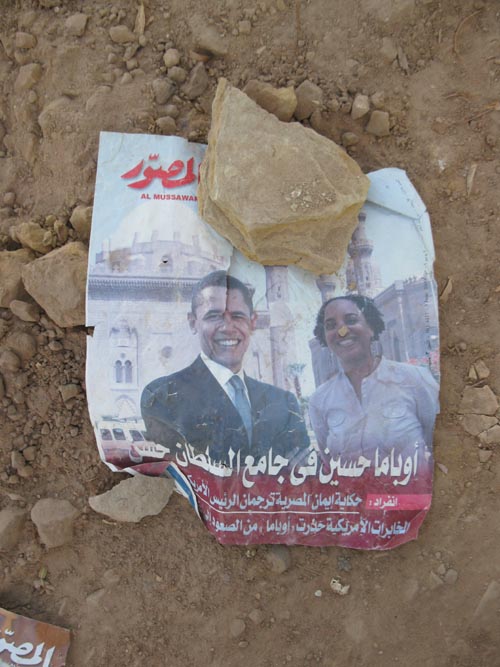
Or not . . .
See also the Big Map: Egypt/Jordan, December 27, 2010-January 11, 2011.
Posted: March 2nd, 2011 | Author: Scott | Filed under: National Geographical | Tags: Grand Egypt & Jordan Adventure, Julian Assange Died For Our Neo-Conservative Sins, Thomas Friedman's Ambivalent View Of Wikileaks
"Hey, isn't that . . ." Jen started to say as we drove through Karak, Jordan on the way to Kerak Castle, the crusader castle built in the twelfth century. The car was quiet. We all saw what we saw and the driver saw that we saw what we saw: on the window of a store we just cruised by was a picture of someone who looked suspiciously like Saddam Hussein. I froze for a second, and snapped these pictures only as we drove by, so it's a little hard to tell:
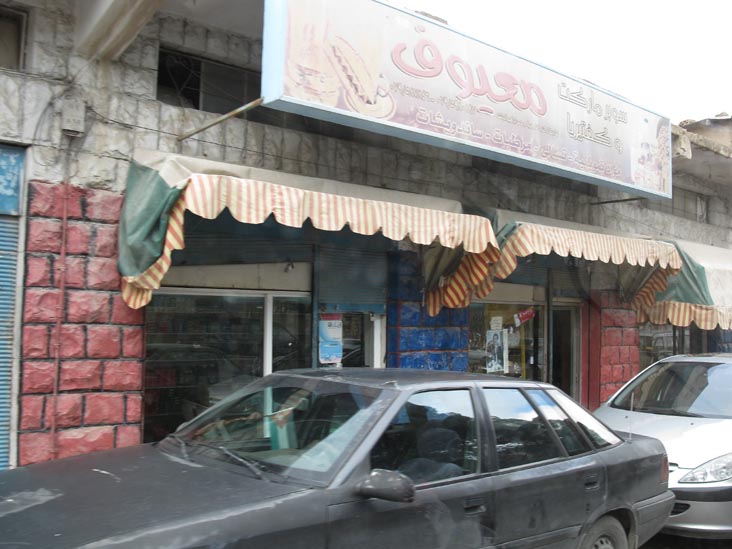
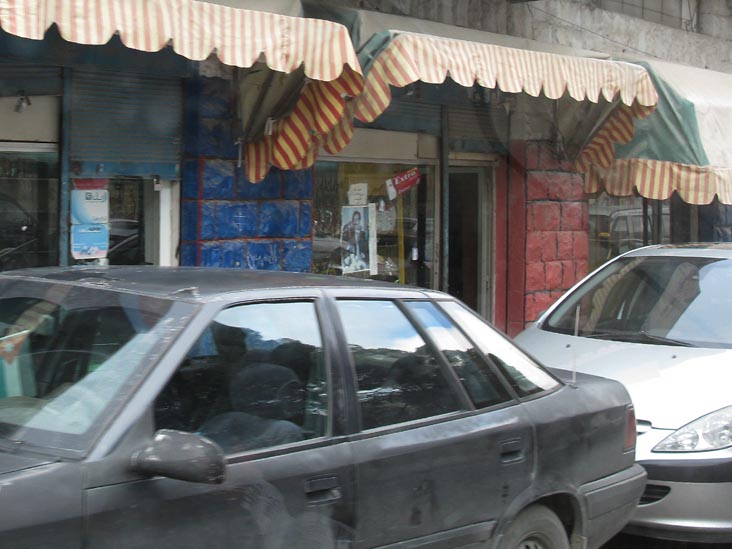
"Yes," the driver sagely responded to Jen. He then went on to explain why there was a picture of Saddam Hussein posted in the window by launching into what sure sounded like an apology for the Baathist regime: countries in the Middle East need strong leaders, more people died in the war than died under Saddam — stuff like that. "But I don't think one way or the other," he added.
"Interesting perspective," Michael said.
I imagine that outside of Iraq (obviously) and certain communities in the U.S. that sent sons, daughters, brothers, sisters, husbands, wives, grandchildren, relatives, friends and acquaintances to Iraq, Jordan is probably the country most affected by the Iraq War. Not only are there close to 1 million refugees or expatriates living in the country because of the war but the war also contributed to steep inflation in Jordan and rising gas prices.
Speaking of gas prices, a couple of hours later here's what our driver spent to fill up the tank along the King's Highway. I think (based on this) that the price of 655 fils a liter is set by the government (the article says that that price was recently lowered to 620 fils a liter):
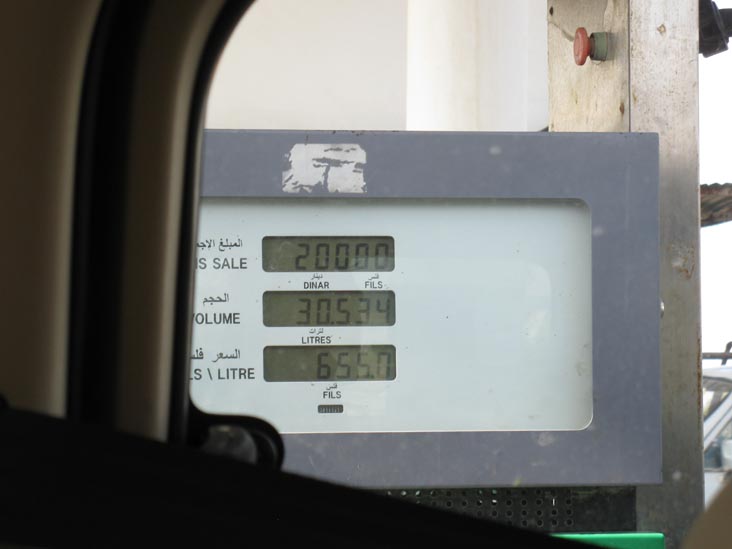
Here I am working on the back of a napkin: 655 fils a liter equals 2.48 Jordanian dinars for a gallon. At the current exchange rate of $1.41 US dollars to one Jordanian dinar, that means that it costs $3.50 for a gallon of gas in Jordan. That's something you don't expect to see in the Middle East. At least I didn't expect to see that. Rising prices start to make you crave stability. In some ways I think all of this contextualizes the ambivalent response.
That said, we were in Jordan before all the stuff in Egypt and now Libya started happening — I wonder if the driver would go for that same teachable moment with us today — just because the goal of "stability" seems somewhat devalued as of late. Or not — maybe Jordanians still have a soft spot for Saddam.
Now before jumping to too many conclusions about the storefront in particular, it's important to keep a couple things in mind. One, it's possible that the picture of Saddam isn't actually him — though it sure did look like him as we drove by — and everyone immediately recognized it as him. Two, it's possible that the store owners meant something else by putting the photo in the window. It is hard to tell without reading Arabic what kind of store this was. Looks like a general store of some sort. I suppose I could try to transliterate, but I'm not sure it would do much good (I already tried once, and took another stab at transliteration this morning when I saw one of the notes I made during the trip about the olive oil factory we visited in Naour being called something along the lines of "Leftawi Naour," according to the driver at least; I tried to discern the letters and all I could make out was "ha-a-sad q nk-wa l yat"). The colors on the store throw me off, too — red and blue are unusual in Jordan, at least in our admittedly limited experience. Green and red, yes, but blue and red are colors I associate with other countries.
Which is to say, as I studied that picture the other day I started to second guess the moment in Karak: Maybe Jordanians aren't all Saddam apologists after all; things are murky; I can't read Arabic; Hey, I subscribe to @QueenRania — I thought we were cool here! Etc., etc.
And then I saw this:
Kuwaiti lawmakers are calling on their government to cut ties with Jordan in a row over the naming of a street in a Jordanian town after former Iraqi president Saddam Hussain, Gulf News reported on Sunday.
So yeah, that happened. What do you do?
(Here are a couple of links on this topic that you might find interesting. The second one is funny for this line — it's in the context of a Jeff Foxworthy-like "You might be a redneck if . . ." list where "Jordanian" is substituted for "redneck," as in "You are a Jordanian if you used to admire Sadam Hussein but refuse to admit that now after what happened to Iraq. [I know you had his poster on your car's window … confess].")
The driver loved showing us these signs along the highway that illustrated how close we were to all these Middle Eastern bogeymen. I liked seeing the signs, too:
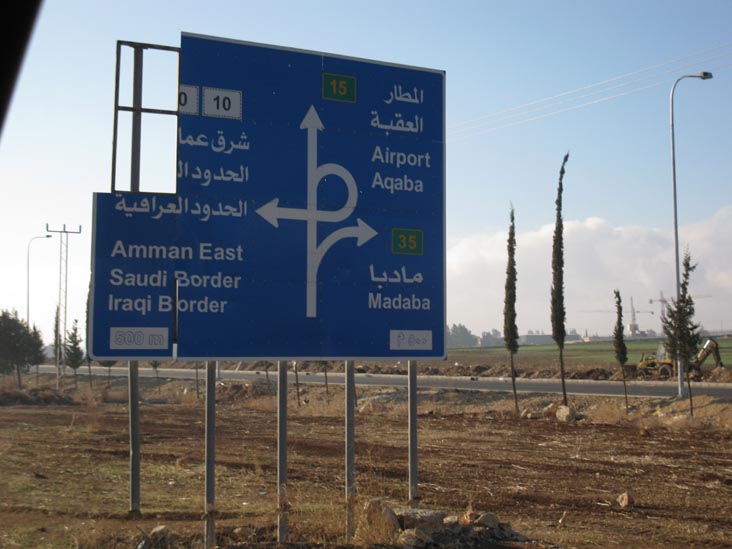
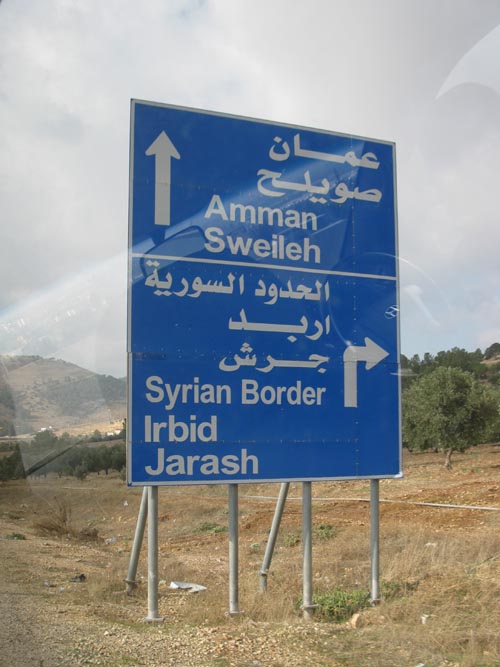
Which is also to say that politics are probably always an issue in such a jam-packed corner of the world. Looking out over the Dead Sea, for example, we were admonished that we were looking at Palestine and not Israel — as one of us let slip at one point (never mind that even the pre-1967 borders included at least part of the Dead Sea coast).
Interesting perspectives, always interesting.
See also the Big Map: Egypt/Jordan, December 27, 2010-January 11, 2011.
Posted: March 1st, 2011 | Author: Scott | Filed under: National Geographical | Tags: Apologies For Saddam Hussein, Bad Transliteration, Grand Egypt & Jordan Adventure, The Price Of Gas In Jordan, You Might Be Jordanian If . . .
If you've been living in an municipality that has had a smoking ban in place for any amount of time then you know that it can be a little jarring to return to an environment where smoking is accepted. Suffice it to say, Egypt and Jordan don't seem like they're ready to ban smoking anytime soon. (It seems unwise anyway what with the cultural restrictions on alcohol — people need to occupy themselves with something, right?)
Egypt in particular seems like a nation of smokers and smoking — and we saw tourists from all over the world embrace that part of Egyptian culture. This also extended to the wonders of ancient Egypt. Not even the Great Pyramid of Giza stopped some from smoking:
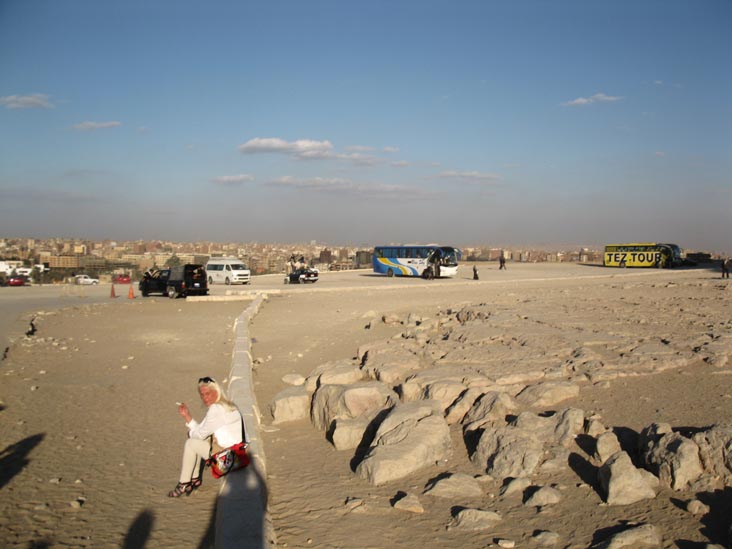
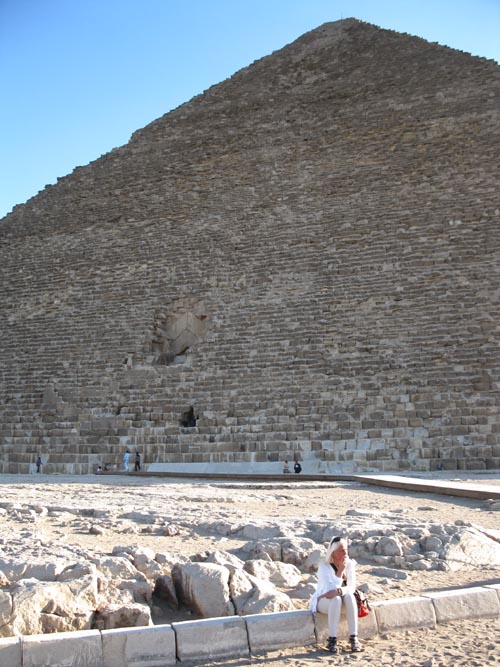
Then again, maybe there's something wonderful that we in mostly non-smoking countries are missing. A luxurious drag on the grounds of the venerable proto-pyramid at Saqqara, for example:
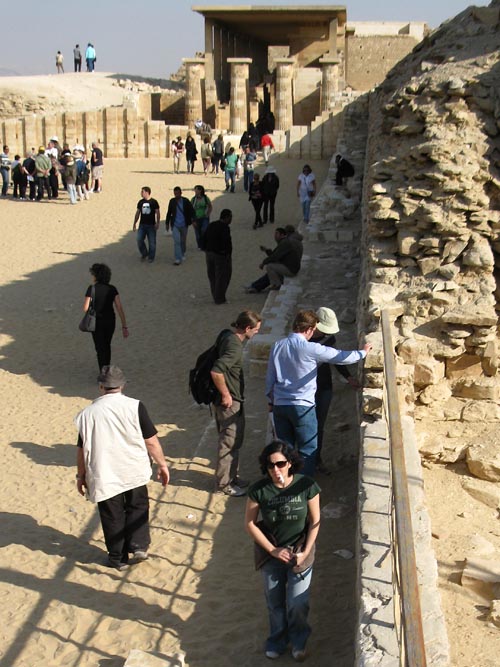
It only took Michael a few days of sightseeing to suggest an idea for a new website: "Smoking With Monuments." He wanted to see pictures of people smoking with The Great Wall, the Wailing Wall, the Berlin Wall — any old wall. He wanted to have entire sections set aside for places of worship. He definitely wanted to include natural monuments. It went on from there. Mostly it occupied us while we were at the sites themselves and then when I got home and went through the pictures I couldn't remember how many I took on purpose and how many were accidental. I think most were accidental, actually.
Admittedly, there is sometimes a mixed message when it comes to smoking at or near monuments. At the bazaar just outside Edfu Temple, for example, you can actually buy cartons of cigarettes:
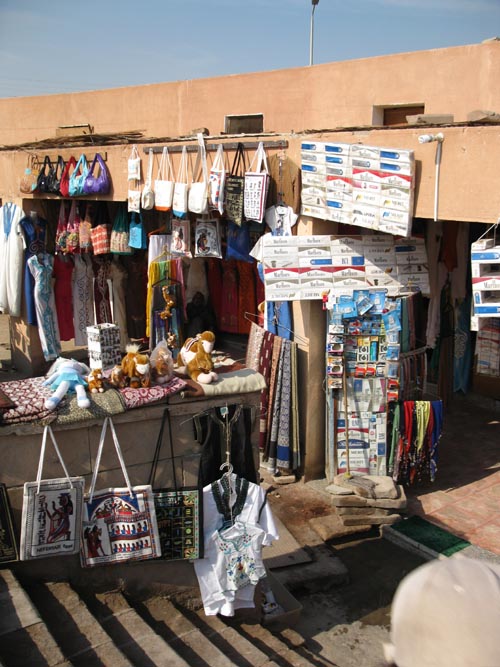
A word about the bazaar outside Edfu Temple — our guide explained that due to security concerns after the terrorism of the 1990s and 2000s, tourist buses were only allowed to stop at Edfu Temple and not anywhere else in the town. This isn't to say that tourists couldn't travel in and around Edfu on their own, just that the big buses were not allowed to stop there. Thus the big bazaar in the parking lot outside the temple — they were trying to find some way for tourists to help the local economy. And I'm assuming this is the reason for the vacant-looking storefronts along the riverfront corniche:
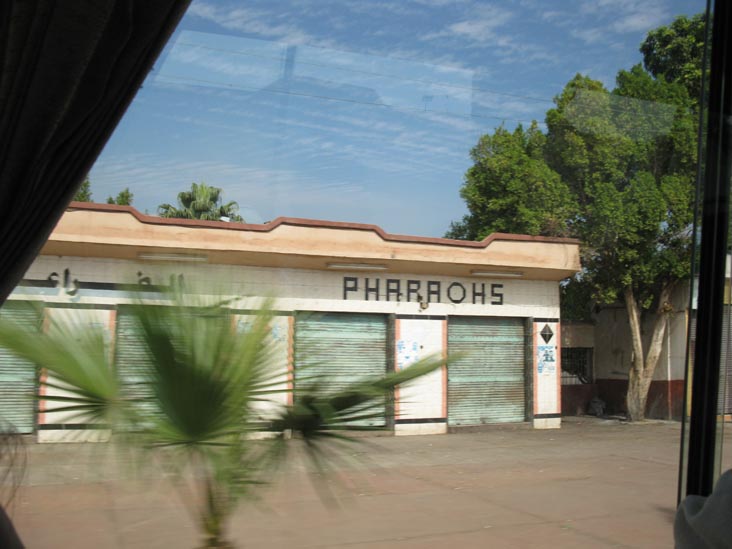
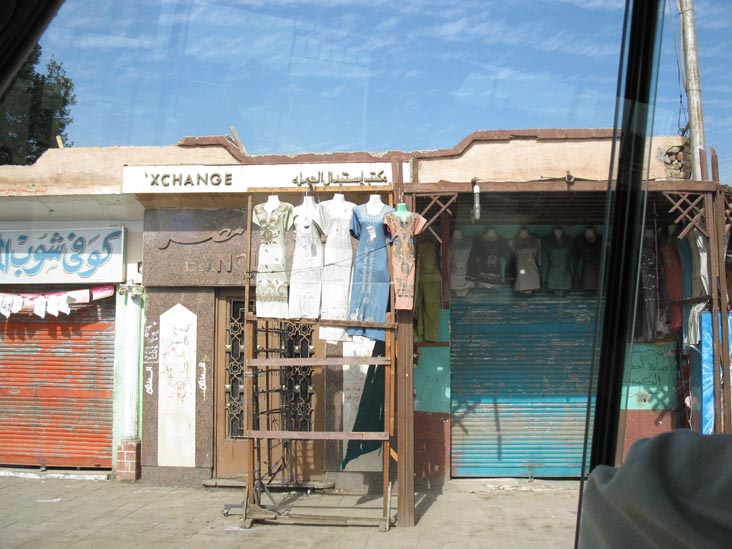
And yet, even with all the smoking some places such as Deir el-Bahari in Luxor, Egypt seem to be trying to enforce a social code, at least around certain parts of the temples there:
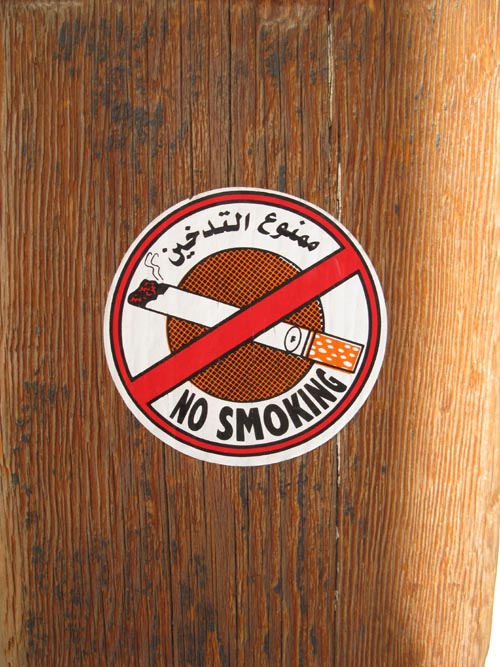
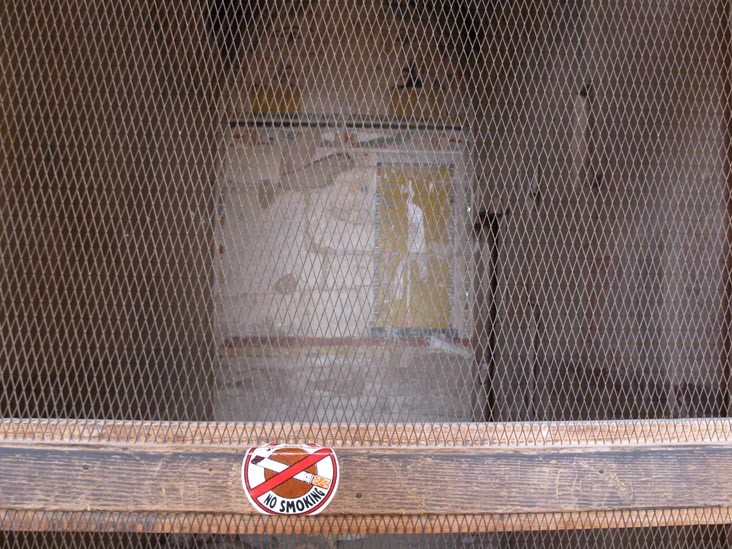
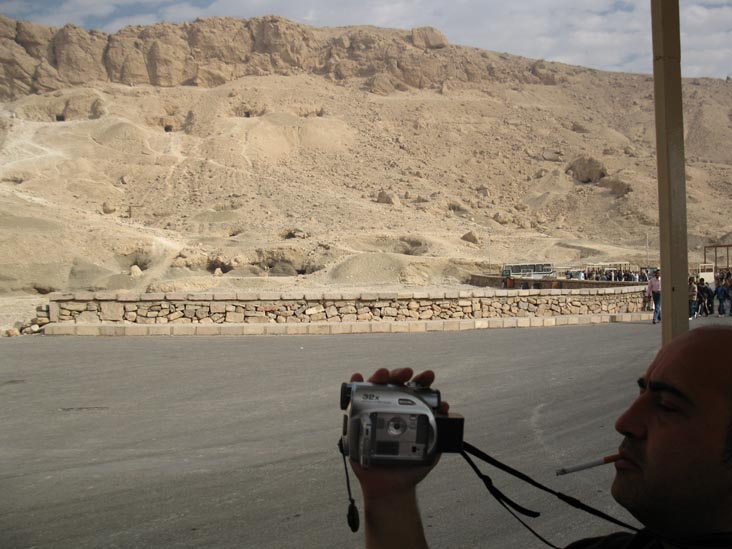
And it's not just Egypt. Petra, in Jordan, is a veritable smoker's paradise:
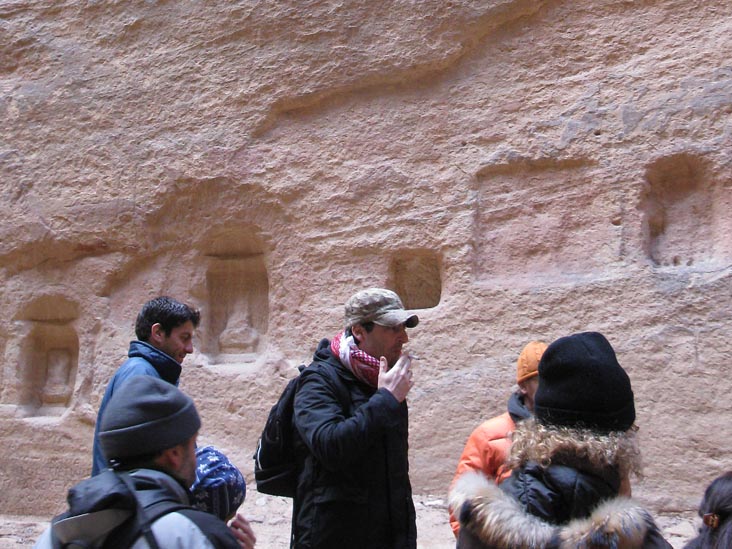
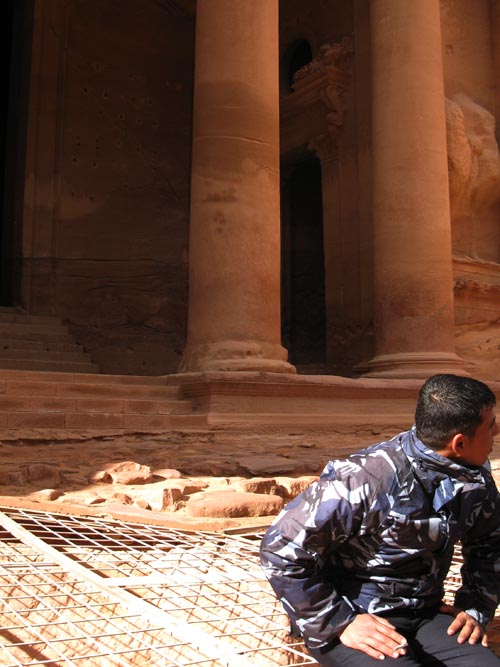
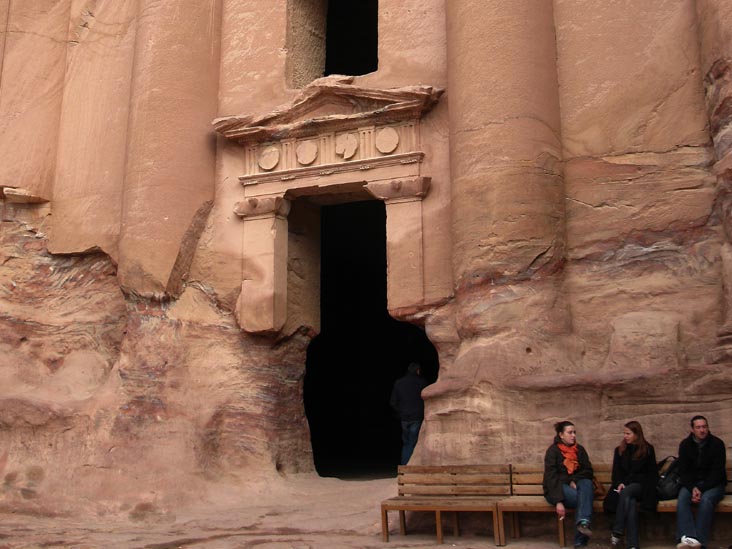
OK, so perhaps not an entire website . . . maybe start with a Tumblr?
See also the Big Map: Egypt/Jordan, December 27, 2010-January 11, 2011.
Posted: March 1st, 2011 | Author: Scott | Filed under: National Geographical | Tags: Grand Egypt & Jordan Adventure, How Is Tumblr Any Different Than Blogspot?, Restrictions On Tourism In Edfu Egypt, Thank You For Smoking, There Is Actually A List Of Famous Walls On Wikipedia




















